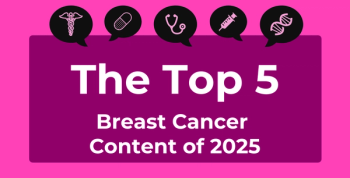
Review Highlights Potential of Nanotherapies in Diagnosing, Treating Rare CNS Diseases
Nanotherapies have the potential to overcome the blood-brain barrier and the blood-cerebrospinal fluid barrier, representing a possible treatment opportunity for rare diseases.
In a
Approximately 30 million Americans, half of them children, are estimated to have a
“Besides dealing with their specific medical problems, people with rare diseases struggle to receive a proper diagnosis, find information and get treatment. The rarity of their conditions makes medical research more difficult,” NORD states. To highlight these shortcomings, NORD will host its annual
A large proportion of rare diseases are neurological disorders which can affect the brain, spinal cord, and nerves throughout the body. As the CNS is widely modulated by the presence of the blood-brain barrier (BBB) and the blood-cerebrospinal fluid barrier (BCSFB), the disruption of these barriers is “usually associated with the development of neuropathologies which can be the consequence of genetic disorders, local antigenic invasions, or autoimmune diseases,” researchers explained. The resulting disorders can take the shape of rare CNS-related diseases.
However, “the number of studies dedicated to treating these rare diseases using nanotherapeutics is limited, which is mostly due to a lack of interest from industrial pharmaceutical companies,” authors said.
The development of nanomedicine—defined as a large range of “nano” objects characterized by a nanometric scale including nanoparticles (NPs), nanocarriers, or nanodrugs—began in the early 1990s as a novel technique with therapeutic benefits for cancer, neurodegenerative and infectious diseases.
Currently, more than 98% of neurotherapeutic drugs targeting CNS disorders are excluded from the brain by the BBB, opening up a window of opportunity for nanomedicine. Nanotherapies can be designed in a way that allows them to efficiently cross the BBB, while versatile nanocarriers “can display tridimensional shapes and suitable dimensions favoring translocation across the BBB.” In addition, nanocarriers have the ability to change their surface properties, can enhance or sustain drug release, and can be engineered to target specific cells, tissues, biochemical pathways or receptors.
The NIH database lists over 1000 nervous system pathologies, with most considered to be rare. These can originate from multiple causes such as congenital abnormalities, infections or injuries. Different symptoms of these conditions are usually chronically debilitating and life-threatening which, in combination with scarce effective curative strategies, further complicate the treatment of rare pathologies.
Current delivery systems and diagnostic tools, like intravenous drug delivery methods, magnetic resonance imaging (MRI), and positron emission tomography (PET) imaging present limitations in patients with CNS-related rare diseases including intrusive collection of tissue samples and radiation exposure.
“The lack of relevant models for a specific disease, especially for understudied rare diseases, is often an issue and must be thoroughly addressed to enhance the in vivo predictive validity and (pre)clinical trial efficiency,” researchers noted. “This could also help us to assess if the integrity of the BBB is maintained prior, during, and after administration of a nanotherapeutic tool.”
When it comes to published research on the use of nanotechnologies in rare CNS diseases, results of a PubMed survey were lacking:
- The terms "brain" or "CNS" and "rare disease" and "treatment" and "nanotherapy’"or "nanomedicine" or "nanoparticles" and not "brain tumor" or "Parkinson disease" (PD) or "Alzheimer disease" or "multiple sclerosis" only led to 25 publications, compared to 900 when applied to brain tumors or 519 with PD
- Nanotherapy/nanomedicine represents only .07% of published treatment options for CNS rare diseases, whereas it is .80% and .78% for brain tumors and PD, respectively
Parenteral drug delivery, including intranasal, intracerebral, intracarotid, or transmucosal methods, all present potential routes for delivering nanotherapies. A physical or pharmacological disruption of the BBB may also enable the transient passage of therapeutic agents such as nanocarriers. However, “these approaches are mostly based on the destruction of tight junctions and may involve permanent CNS damage, since they are not drug- or nanocarrier-specific. They might also allow the passage of a large variety of endo/exogenous (macro)molecules with the molecule or carrier of interest,” researchers cautioned.
Despite the lack of published research on the matter, authors highlighted several experiments of nanotherapies on specific CNS disorders examining:
- Nanocapturing cholesterol in Niemann–Pick Type C Disease
- Delivering VEGF-mimicking nanoconstructs in spinocerebellar ataxia
- Use of a nasal nanoemulsion for brain creatine shipping in creatine transporter deficiency
- Using a nano gene therapy in mucopolysaccharidosis type I
- How nanomedicine can repurpose clinically approved drugs for rare brain infectious diseases
- Enhancing BBB crossing in primary central nervous system lymphoma
Because many therapeutic targets developed in recent years cannot currently be efficiently accessed, these limitations “prompt for the development of non-viral carriers which can assume the transport, protection, and delivery of a wide range of molecular or sub-molecular complexes,” authors wrote.
As development of nanotechnologies require higher cost for research, development, and production, uptake has been slow among major pharmaceutical companies and developments would not be economically beneficial given the relatively small number of prospective patients.
An additional limitation to the development of nanomedical approaches is a lack of information on cellular and tissue interactions of the nanocarriers, apart from those taking place in the targeted tissue. Few studies have also examined the immunogenicity, inflammation potential, or genotoxicity of the nanoobjects.
Given the importance of early diagnosis of rare diseases so as to improve treatment and care, the review’s findings “highlights even more the relevance of nanotherapeutics as diagnostic tools, with several CNS rare diseases showing a much better outcome when identified and treated early,” researchers concluded.
Reference
Faouzi A and Roullin VG. Thing big, start small: How nanomedicine could alleviate the burden of rare CNS diseases. Pharmaceuticals (Basel). 2021;14(2):109. doi:10.3390/ph14020109
Newsletter
Stay ahead of policy, cost, and value—subscribe to AJMC for expert insights at the intersection of clinical care and health economics.









































